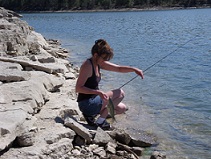Tag: fish attractors
Artificial reefs build fish habitat, coastal economy near shore
Oregon needs fish habitat
Fish habitat project planned on Beaver Creek is combined effortPosted: Wednesday, Aug 3rd, 2011
This month, the Oregon Department of Fish and Wildlife and the Lincoln Soil and Water Conservation District will place 60 Continue reading “Oregon needs fish habitat” | ||||||||||
Bad River receives grant for fish habitat restoration
WHY FEED YOUR FISH – BY BOB LUSK
Pond Boss subscriber Shane Howell of Dallas stepped on rocks near one of five shoreline feeders surrounding his spanking-new 30-acre Oklahoma lake. He pushed the timer button, then stood back to watch the action as thousands of tiny protein-laced nuggets pelted the water’s surface. 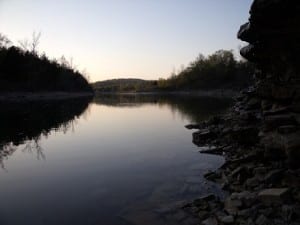
Hundreds of young bluegill and fathead minnows welcomed the offering, and quickly dispensed with the free meal, in a frenzy fit for starving piranha.
“We designed and stocked this lake to become a trophy bass lake,” Howell said with a smile, “and part of our management plan is to feed the baitfish.”
Feed the baitfish? What gives? Why put protein pellets in the water that the top-end gamefish may or may not eat?
Those are questions many fish pond owners ask themselves. Should you feed your pond fish? Nationwide, biologists disagree on the issue of feeding pond fish.
Proponents point out that high-protein pellets supplement the natural food supply in a fish pond and directly boost growth-rates among certain species, while indirectly improving the rates on some others. Rainbow trout, for instance, can be fed like so many barnyard chickens.
Then again, you might hear some negatives, such as: It’s a commitment. The cost is prohibitive. Feeding causes fish to congregate, altering their behavior. It’s like welfare. Pellets aren’t “natural” in a pond. Water quality is changed, forever.
So’s which side is right? Here’s how to decide the issue for yourself.
If you want to expedite growth-rates of bluegill, catfish and trout, or if you want to increase standing crops of fish in your pond, the answer is simple. Feed the fish.
For every two pounds of protein-rich, pellets (I recommend the floating variety) a group of fish consumes, those fish collectively gain a pound. The fish in your pond now weigh one more pound than before. Two pounds of feed, a pound of fish, and so on.
Let’s look a little deeper into the numbers. The best fish foods cost about 30 cents a pound. So, 60 cents of feed grows a pound of fish.
Stocked any fathead minnows lately? Priced at $10 a pound, fathead minnows can not compete with commercial pellets when it comes to feeding your pond fish.
Trying to grow huge largemouth bass? So many Pond Boss readers are.
Ol’ Bucketmouth won’t dare eat a prepared, pelleted diet. Heck, sitting atop the food chain, with a mouth big enough to swallow a cantaloupe, bass can eat anything in the pond, especially living critters. Bass snub tiny little pellets. Largemouth have bigger fish to fry, so to speak.
But what does a largemouth love to eat? Bluegill. And Mr. Bluegill loves to eat pelleted fish food.
Aha. Feed the fish that feed the bass. By so doing, you have created your own miniature food chain.
A well-managed pond, covering half a surface acre up to three acres, can grow and maintain 200-to-300 pounds of channel cat or trout along with 200-to-300 pounds of forage fish, per surface acre. That’s with an abundant supply of bluegill and other forage species. But, if you were to add high-protein fish food, the same pond can easily double that production.
Arguments arise. Is feeding a commitment? You tell me.
Much of the U.S. has at least 200 days of growing season, slightly less in the Upper Midwest and northern New England, fewer still in Canada. For the sake of creating a model feeding program for a mythical pond, let’s just say you intend to feed only three or four days, maybe five days some weeks. 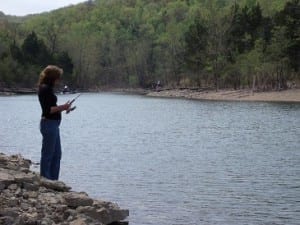
Your fish consume all of what you feed, say four pounds a day per surface acre of water. Over the course of 150 days, you feed 600 pounds of feed. Those 600 pounds of feed yield 300 pounds of fish, doubling your ponds natural production capabilities.
Do the math: Six hundred pounds of feed, at 30 cents a pound … $180. Less than $200 to put 300 pounds of weight on your fish. Cheap. I consider that a bargain.
Can you feed more? Sure, but be careful.
Two pounds of feed yields a pound of fish, but there is a balancing act to consider. For every pound you feed to the fish, there’s a pound of nutrients, some converted to energy, some processed by the fish and expelled into the water as waste. When waste dissolves in your pond, the water must process it.
Too much feed can result in too many pounds of fish, too many pounds of waste, and ultimately, problems with your water quality, if your pond water can not work with Mother Nature to clean up the extra mess. In extreme cases, I have seen overfed ponds end up with massive die-offs related to poor water quality and low levels of dissolved oxygen.
Feeding catfish? Grow Mr. Whiskers to two pounds, then catch and eat the little darling. Want bigger catfish? Stock lower numbers in the beginning. Want to name them? Stock fewer yet.
In short, do not overfeed, or plan on removing a few fish as you go along. Otherwise, your fish and your water quality will suffer.
Here’s one of my Rules of (Wet) Thumb: Never feed more than 10-to-20 pounds of floating fish food, per surface acre, per day.
Theory can get a little complicated, since young, fuel-burning fish, converting at a rate of 2-to-1, will eat 3 percent of their body weight per day during the growing season. So, keep your feeding program simple. 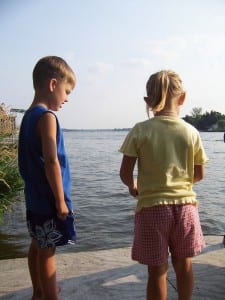
To keep it simple, I recommend that in most sportfishing ponds that you feed no more than twice a day, for brief durations, once in the morning, once in the late afternoon. Feed only what the fish will clean up 10-to20 minutes. Otherwise, you’re wasting your money to watch the wind and waves carry your pellets to the other side of the pond.
Either way, keep your feeding program simple and consistent. Feed from the same place, same time, each day. As your fish grow, you may discover that where you once were feeding for production, now you are feeding to maintain. That’s when you reach decision time.
Do you feed the same amount of feed, to the same number of fish that stay the same size? Or do you reduce numbers to increase individual size?
Some biologists contend that feeding fish is akin to welfare. It creates an artificial environment. Point well taken.
Granted, when you offer pellets to a fish, it tends to leave the real world of fish-eat-fish. But it’s a balancing act. The fish you feed are not necessarily taken out of competition, but they compete less with other fish for natural prey in your pond.
In that regard, feeding pellets makes “more” natural food, to be distributed among all fish, not just a few. This increases a pond’s ability to support fish — the very point of pond management. 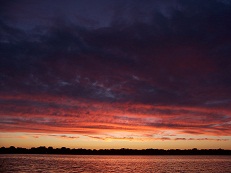
Critics say a feeding station tends to congregate fish, to pull them away from their natural underwater home. Absolutely. When the dinner bell rings, fish come from as far as 100 feet away.
Bluegill and minnows surface to attack the pellets, then disappear just as quickly as they came. Hybrid stripers can put on quite a show of force when they gulp down pellets. Bass take note, too. A big bass will not be attracted to the pellets, but to the creatures partaking of the free offerings.
After all, bass won’t turn down an easy meal either. Bluegill eat fish food; bass eat bluegill eating fish food. In nature, there’s always a payback.
Too many fish can jeopardize water quality, so feed less or reduce the number (or size) of the fish. One option is adding an aerator. The tiny air bubbles bursting at the surface help Mother Nature to combine oxygen and sunlight in helping to flush or “burn” the waste products.
Rule of (Wet) Thumb: Buy good fish food. Read the bag tag, make sure the feed contains at least 28-to-32 percent digestable protein. Read the ingredients, looking for the words “fish meal.” If you don’t see those words, don’t buy the food.
For best results, use only feed intended for fish. Feed dog food to dogs, monkey food to monkeys. Your fish deserve the real meal deal.
When it comes to feeding, pond owner Shane Howell has it figured out.
“Since our goal is to grow trophy bass, and this is the first year our lake has been stocked,” he said, “we decided to grow as much baitfish as possible, to grow the biggest bass possible.”
Howell knows that it takes at least 10 pounds of baitfish for his bass to gain a pound. In his fishing hole in south-central Oklahoma, five feeders pitching out 10 pounds of feed each day will set the buffet table for his bass to grow as fast, and as large, as they can.
Howell has done the math … 10,000 pounds of feed over 200 days will produce an extra 5,000 pounds of baitfish for the 1,500 Florida bass fingerlings he recently stocked. That’s an extra 170 pounds of baitfish per acre, (above what the lake produces without feeding) that will make his bass grow to large sizes much more quickly than a “normal” lake of similar size.
The irony of Shane’s program is that when he buys $3,000 worth of feed, the largemouth will be growing rapidly, without eating so much as one pellet.
POND BOSS Magazine is the world’s leading resource for fish, pond and fisheries management information including discussions on muddy water, raising trophy fish, fish feeding, building a pond, algae control and more. Check us out at www.pondboss.com or contact Bob Lusk, the Pond Boss himself, at 903-564-5372. His books, Basic Pond Management, Raising Trophy Bass and Perfect Pond, Want One, may be purchased by calling 800-687-6075 or ordering online at www.pondboss.com
“The Refuge” artificial fish habitat
Price: $350.00
SKU: oas-6
Weight: 142.00 LBS
Rating: ( 1 product review )
Shipping: Free Shipping
Quantity: 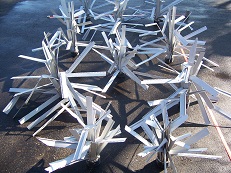
Product Description
Here is what you have been asking for! A substanial addition to any habitat plans, this deeper water structure group, has room for all ages and sizes of fish.
With three each of the Keeper and Safehouse, this resting area provides a total of 318 square feet of surface area.
The right amount of cover to create room for fish to rest and feed in the same location.
These six units will cover an area between 20×10 feet, or a line over 30 feet long.
Experiment with different layouts with each additional refuge you install.
Keeper
Maximum shade and protection is abundant throughout this eco. friendly product made with reclaimed pvc material. With limbs all standing a full 48″, these 2-1/2″-3-1/2″ wide surfaces grow algae and aquatic life quickly.
Each keeper weighs approx. 32 pounds, and is recommended for depths over 10 feet. This large and somewhat coarse cover, provides habitat for all sizes of fish.
Bass,crappie,panfish alike utilize the shading effects of this new type of artificial fish attractor. Go-green and promote fish habitat restoration! Made in the USA with all American made materials.
Reclaimed pvc limbs provide an eco.-friendly solution to fish habitat loss and degradation.
Safehouse
These safehouse fish habitat units stand 46″ tall and weigh 16 pounds each. This fish attractor has all the needed shade and coverage to hold all sizes of fish.
Consisting of limbs ranging in width from 2.5″-3.5″ wide and 18″-46″ tall, they open to a full 72″ wide. With a minimum of 44 square feet of surface area, it provides plenty of room for algae and shade to attract fish.
Recommended for depths of 6′-12′. Reclaimed pvc limbs provide an eco.-friendly solution to fish habitat loss and degradation.
Bend to shape by hand to any desired shape and toss in water. Sinks itself. Made in the USA with all American made materials.
Over 44 square feet surface area each.
Find Similar Products by Category
Artificial Fish Structures
Product Reviews
perfect price and size
Posted by Unknown on 27th Apr 2011
thanks for adding this group of structure. i alraedy bought two keepers and they work good.Will be ordering more of these groups sonn.
Customers Who Viewed This Product Also Viewed
“Cradle” Artificial Fish Habitat
$60.00
Add To Cart
“Safehouse” Artificial Fish Habitat
$55.00
Add To Cart
Artificial fish habitat “Starter Pack”
$675.00
Add To Cart
“Keeper Four Pack” Artificial Fish Habitat
$260.00
Add To Cart
Our Newsletter
Your First Name:Your Email Address:
Add to Wish List
Click the button below to add the “The Refuge” 6-pack artificial fish habitat structures and attractors to your wish list.
Related Products
“Bassinet” Artificial Fish Habitat
$30.00
“Keeper” Artificial Fish Habitat
$70.00
“Nursery” Artificial Fish Habitat
$30.00
“Playground”Artificial Fish Habitat
$30.00
“Safehouse” Artificial Fish Habitat
$55.00
You Recently Viewed…
“Keeper” Artificial Fish Habitat
$70.00
Add To Cart
“New 8″ Cradle” Four Pack fry fish habitat
$210.00
Add To Cart
“The Refuge” 6-pack artificial fish habitat structures and attractors
$350.00
Add To Cart
“Keeper Four Pack” Artificial Fish Habitat
$260.00
Add To Cart
“Triplet” Artificial Fish Habitat-3 pack
$75.00
Add To Cart
New Hampshire Artificial Fish Habitat Plans Expand!
Warmwater Lake and Pond Habitat Initiative
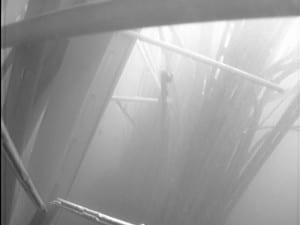
The Department’s fisheries biologists recently discussed the feasibility of installing fish habitat structures to mitigate for the absence or loss of physical fish habitat in some New Hampshire water bodies. This discussion was initiated because of the potential opportunity that exists to enhance warmwater fisheries through fish habitat improvement projects.
The overall goal of these habitat projects is to improve warmwater fish populations and the opportunities to fish for these species. An additional objective of installing shoreline habitat structures would be to increase youth fishing opportunities.
Improving fish habitat by installing structures has been a successful management strategy in use for many years in states across the U.S., as these structures can benefit both forage and sport fish populations in a number of ways. Habitat structures have been shown to provide important nursery areas for many fish species and can act to increase fish growth and survival. The abundance of forage fish species is often enhanced in areas with habitat structures, which in turn can increase the abundance and growth of sportsfish (this is especially relevant in some NH lakes and ponds where a decline or lack of forage fish and/or crayfish may be the result of the absence or loss of appropriate habitat). Additionally, studies have shown that habitat structures can increase nest density, spawning success and juvenile survival of both largemouth and smallmouth bass.
Using fish habitat structures in New Hampshire waters is currently in a conceptual phase and there is no firm timeline for when, where, and what types of structures will be used. Before formulating a specific plan, the Department’s fisheries biologist will first thoroughly review the existing scientific literature, inventory current habitat quality and quantity on various lakes and ponds, and communicate with anglers in an effort to better understand their interest in this type of initiative.
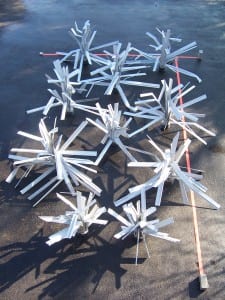
The Department is also actively pursuing a feasibility analysis of using fish habitat structures. The feasibility analysis will answer the following questions: Will fish habitat structures provide habitat for the fish species of interest? What types of structures have been used elsewhere and for what purpose? What types of structures (artificial or natural) are allowed under current regulations? What are the potential problems (maintenance, ability to obtain permits from NH DES, potential navigation issues, potential effect on other fish species such as invasive species) in using fish habitat structures? What are the costs of building, deploying and maintaining such structures? How will anglers use the fish habitat structures (i.e., how will they access them)? What monitoring efforts would be best suited for evaluation purposes?
Warmwater fish habitat projects offer an exciting opportunity to improve fish habitat and warmwater fisheries in New Hampshire lakes and ponds. Additionally, involving anglers in this process presents an excellent opportunity for the Department and anglers to work together towards the common goal of improving and sustaining our state’s fisheries resources for current and future generations.
CONTACT:
John Magee, Fish Habitat Biologist
Gabe Gries, Region 4 Fisheries Biologist and Warmwater Project Leader
Five Fish Cribs Placed on Long Lake
How to Build Fish Cribs for Habitat
How to Build Fish Cribs for Habitat
The approximate cost of a crib is about $10.00 each, and now there is a new way to help purchase cribs for Lake Chippewa Flowage. In the summer of 2002 friends of the flowage will have the opportunity to purchase $10.00 raffle tickets. A drawing will be held in October and the lucky winners will be able to schedule a free day with a local fishing guide for 2003.
The Chippewa Flowage was created over 75 years ago. In those 75 years many trees and stumps that harbored food and shelter for fish have disappeared through natural decay. Realizing the structure must be replaced for a healthy fishery, the Lake Chippewa Resort Association, along with the Chippewa Flowage Area Property Owners Association started building and placing fish cribs in Flowage waters. Since March 1996 over 2500 cribs have been built and placed by volunteers from these associations. Building Cribs:
The first step is to accumulate wooden pallets. Pallets are donated by various companies in Wisconsin and trucked to the flowage at our expense. Cinderblock, clips and strapping must be purchased to build cribs. Cribs are constructed by layering pallets separated by cinderblocks on each comer until it is 3 or 4 pallets deep. Then the “sandwich” is strapped together. At this point the cribs are loaded by tractor-forklifts onto special pontoon boats that have been totally stripped down to just bare decks. Workers then turn the pallet/cribs on edge to stuff in brush. It takes a lot of brush to fill each crib. Accumulating brush and stuffing the cribs is actually one of the hardest parts of the job. Finally , when the pontoon is totally loaded, the captain and workers shove off and the cribs are dropped off into new crib locations.
Meanwhile other volunteers are cooking and serving food and beverages to the hungry workers. A master map is kept by the associations, but not published. After all, the cribs are for the fish, not the fishermen!
Crib building is an on-going project. Members of both associations are committed to preserving and enhancing this great fishery for current and future generations. If you are interested in supporting this effort, look for Crib Program Raffle Tickets on your next visit or mail donations to: CFAPOE Adopt-a-Crib P.O. Box 555 Hayward, WI 54843-0555
Calif. agencies to sue over sucker fish habitat
Calif. agencies to sue over sucker fish habitat
Associated Press
Twelve Southern California water agencies have notified the U.S. Fish and Wildlife Service that they plan to sue to block expanded sucker fish habitat that could crimp water supplies for people, the agencies said Tuesday.
The action was prompted by a ruling, which went into effect in January and added 1,026 acres to the fish’s habitat, bringing the total protected area to more than 10,000 acres. The federal agency expanded the habitat for the small brown-and-black mottled fish after an environmental organization sued in 2005, alleging the fish was not protected in its namesake river, the Santa Ana River.
The legal notice, filed Monday, gives the federal agency 60 days to respond before a lawsuit is filed.
Jane Hendron, a spokeswoman for the Fish and Wildlife Service’s Carlsbad office, did not immediately return a call or e-mail seeking comment.
The habitat designation does not mean any human water supplies will be shut off or altered, but it does mean that local water districts and cities must consult with the Fish and Wildlife Service before doing work on any new or existing water projects with any federal involvement and could face stricter limits on what they can do.
The expanded habitat includes upstream areas that have no sucker fish living in them now — and that sometimes dry up entirely because those areas hold the gravel that is critical for the fish’s survival, said Ileene Anderson, a biologist with Center for Biological Diversity, the group that sued in 2005. That gravel needs to be washed downstream to help the fish, she said.
“The whole reason is to identify areas that may not have any animals in them anymore, but historically did. The critical habitat looks at recovery opportunities as well, rather than just keeping them on life support,” Anderson said of the fish.
The water agencies that filed the notice said Tuesday they were most concerned that they would be required to use water that currently goes to residents in Riverside and San Bernardino counties to push gravel downstream to areas where the creatures reproduce.
That could mean diverting water that could supply more than 500,000 people and impact the water supply for about 3 million residents who live downstream, said Douglas Headrick, general manager of the San Bernardino Valley Municipal Water District’s sucker fish task force.
“The only way to move the gravel is with water. What we’re concerned about is that someone will require us to use the water that we’ve been diverting to move gravel. We don’t know any other way,” he said.
The Santa Ana sucker fish is listed as a federally threatened species with known populations in areas of Riverside, San Bernardino, Los Angeles, Ventura and Orange counties.
The fish in Ventura and Los Angeles counties, in the Santa Clara River, have interbred with other types of sucker fish, however, and are not included in the critical habitat listing because they are not considered genetically pure, Anderson said.
The critical habitat now includes portions of the Santa Ana river in San Bernardino, Riverside and Orange counties and the San Gabriel River and Big Tujunga Creek in Los Angeles County.
The 12 agencies who are objecting to the final ruling on the habitat have planned or current projects or activities that will be affected by the inclusion of the Santa Ana River in the protected area, according to the 60-day notice paperwork. Included are water districts in Big Bear, San Bernardino, Riverside, Yucaipa and others, as well as the city of Redlands.
Read more at the Washington Examiner: http://washingtonexaminer.com/news/2011/04/calif-agencies-sue-over-sucker-fish-habitat#ixzz1KBj6L3I7

